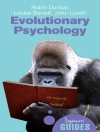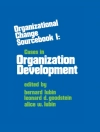Using Stories to Build Bridges with Traumatized Children is full of creative ideas for how you can use stories therapeutically with children in counselling, life story work or direct work.
Psychologist Kim S. Golding shows how you can use stories to build connections with children aged 4–16 and support their recovery from trauma and stress. She illustrates the techniques with 21 stories adapted from her own clinical work with children and families, and explains how you can expand or adapt them to make them more relevant for a particular child. Advice and stories are arranged into sections dealing with common psychological issues, including looking back and moving on, lack of trust and need for attention. Golding also gives invaluable tips for planning stories and life story work, and for storymaking with children. She also describes how stories can be used therapeutically with parents of traumatized children and as a tool for self-reflection by counsellors.
Imaginative and practical, this book will be enormously useful for counsellors, psychologists, therapists and social workers working with traumatized children, and will also be helpful for parents and carers involved in therapeutic parenting.
Tabella dei contenuti
Foreword. Steve Killick, Clinical Psychologist and Storyteller. Introduction. 1. The Power of Stories for Facilitating Healing for Children and their Families. 2. ‘Once upon a time…’ Creating Your Own Stories. Section One: Looking Back and Moving On, Life in Stories. 3. Story One: The Caterpillar Who Did not Want to Become a Butterfly. 4. Story Two: Kirsty, the Cuckoo in the Nest. 5. Story Three: The Puppy Who needed healing. Section Two: Coping in Fear and Without Trust. 6. Story Four: Conner the Superhero. 7. Story Five: Millie and Her Mother. 8. Story Six: In the Eye of the Storm. Section Three: I Will Do It By Myself. 9. Story Seven: Born to Care. 10. Story Eight: The Boy with all the Knowledge of the World in His Head. 11. Story Nine: The Mermaid’s Song. Section Four: Keep Noticing Me. 12. Story Ten: Melinda and the Golden Balloon. 13. Story Eleven: The Clockmakers and the Cuckoo Clock. 14. Story Twelve: The Space Boy. Section Five: Learning About Relationships. 15. Story Thirteen: Survival of the Fittest. 16. Story Fourteen: A Mummy Finds out how to Look After her Baby. 17. Story Fifteen: Sally Sunshine and the Big Bag of Worries. Section Six: Stories for Parents. 18. Story Sixteen: A Daughter’s Tale. 19. Story Seventeen: William and Edward. 20. Story Eighteen: Longing and Belonging. Section Seven: Stories for the Practitioners. 21. Story Nineteen: The Finest Forest in all the Land. 22. Story Twenty: Never You Mind. 23. Story Twenty One: Bridge over Troubled Water. Appendix 1. Planning a Solution Story. Appendix 2. Planning a Therapeutic Story. Appendix 3. Planning a Trauma Story. Appendix 4. Planning a Narrative to Explore Life Story. Appendix 5. Planning an Insight Story. References.
Circa l’autore
Kim S. Golding CBE, BSc, MSc, D. Clin. Psy. AFBPs S is a clinical psychologist who works in Worcestershire, England where she was influential in the founding of the Integrated Service for Looked After Children – a multi-agency, holistic service providing support for foster, adoptive and residential parents, schools and the range of professionals supporting children growing up in care or in adoptive families. Kim was trained and mentored by Dan Hughes in the use of Dyadic Developmental Psychotherapy (DDP). She was formerly on the board of the Dyadic Developmental Psychotherapy Institute supporting the use of DDP in Europe, USA and Canada. She accredits and trains professionals in the approach and has been invited to speak about this work internationally.












